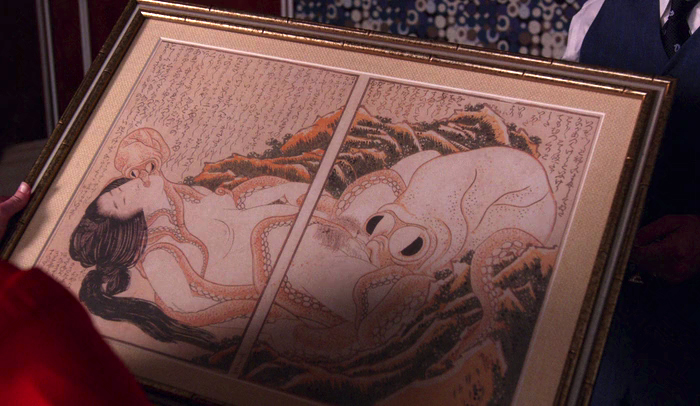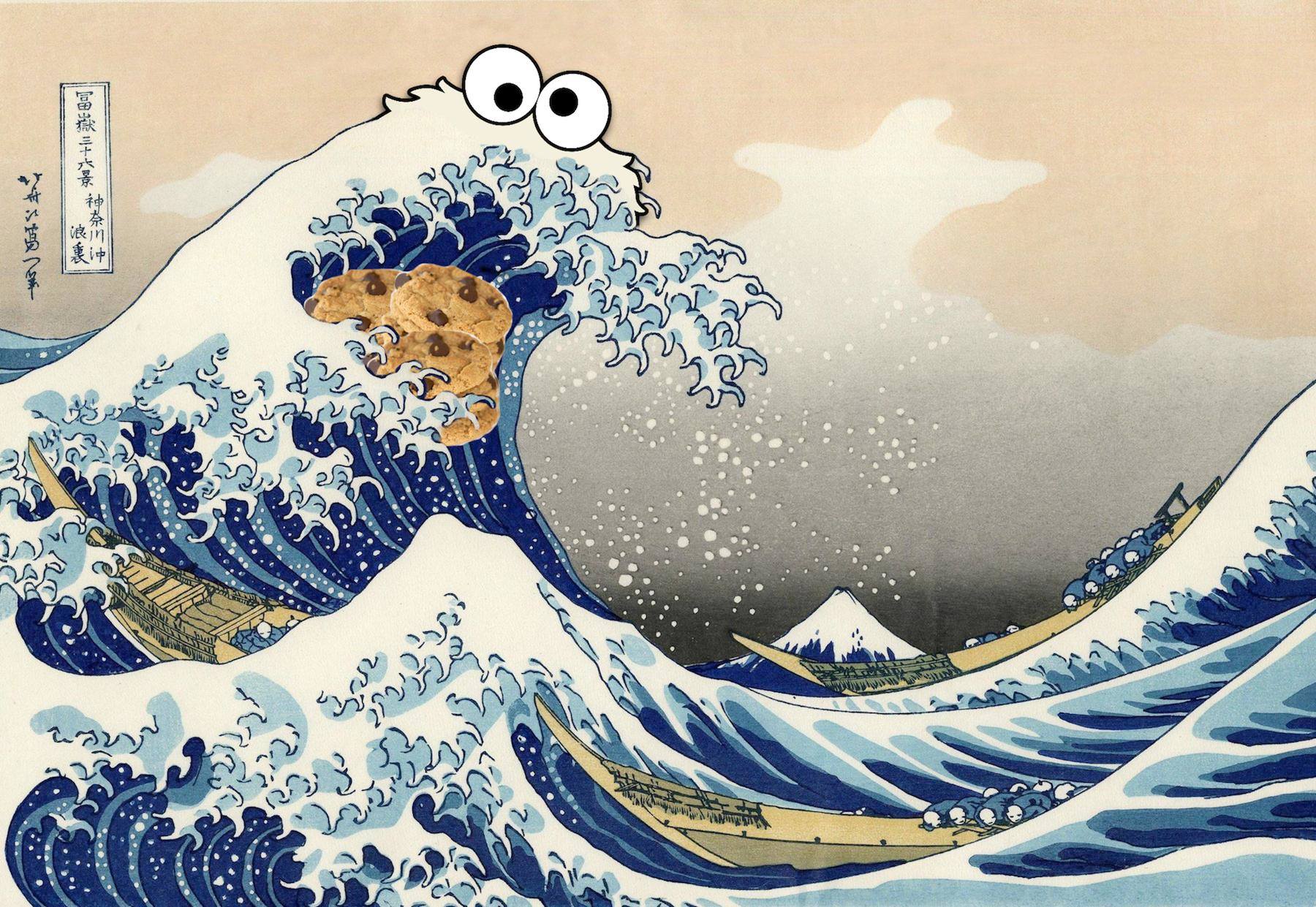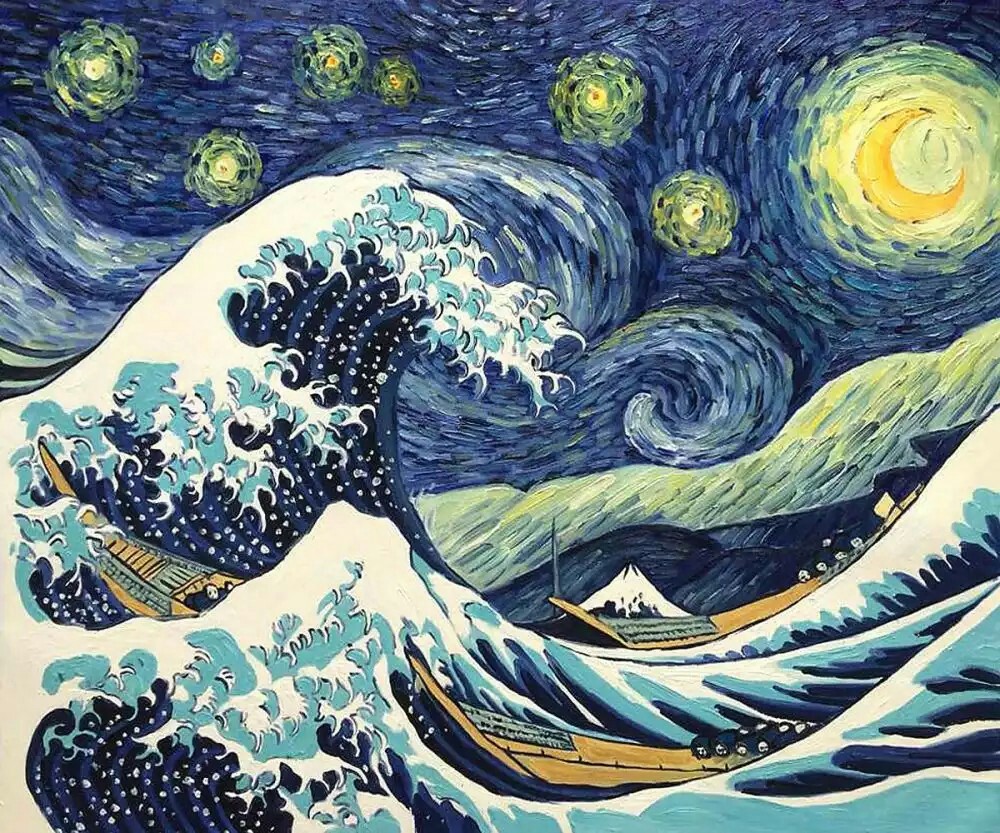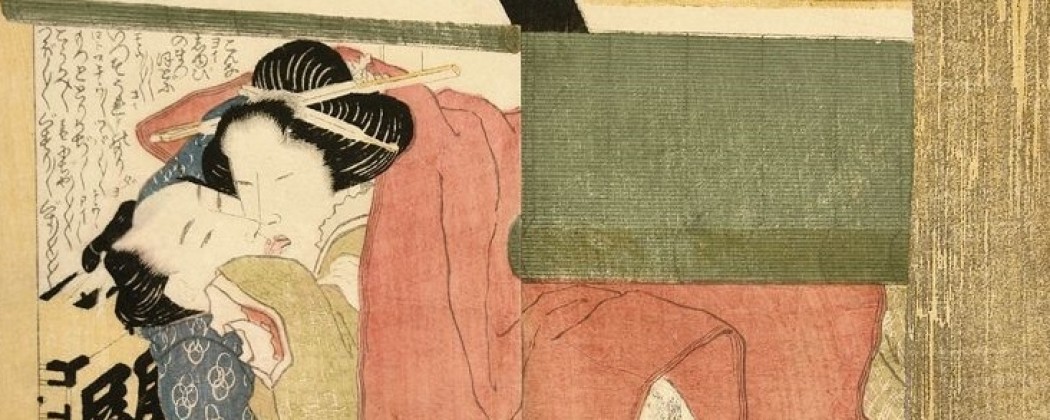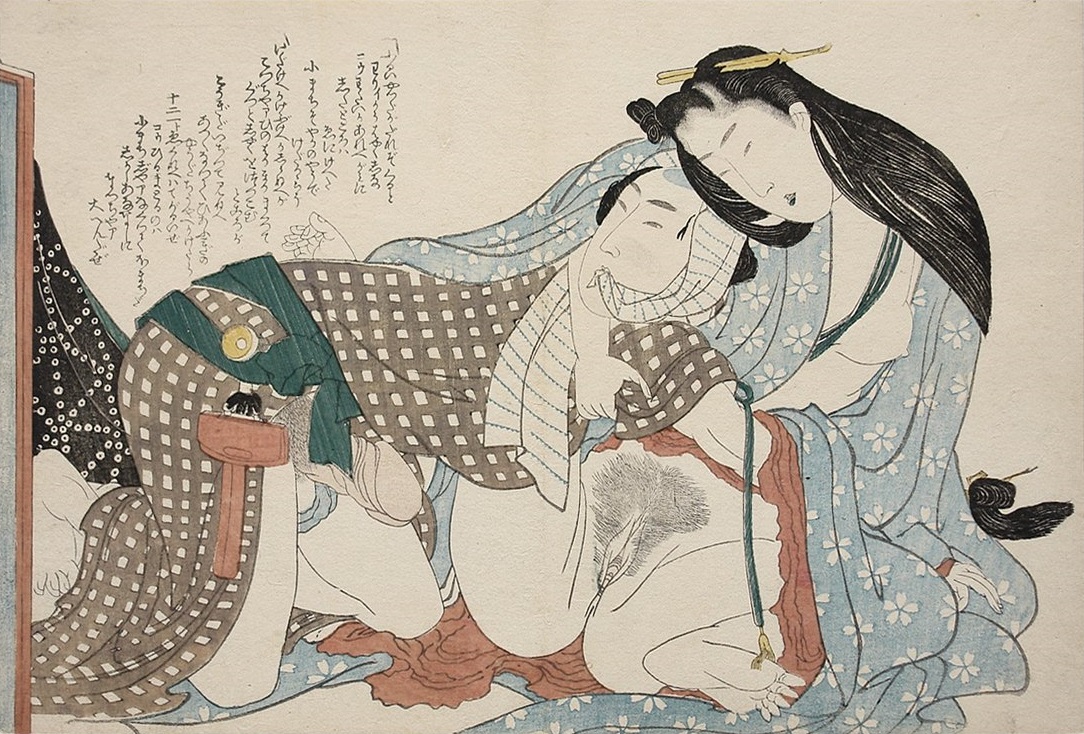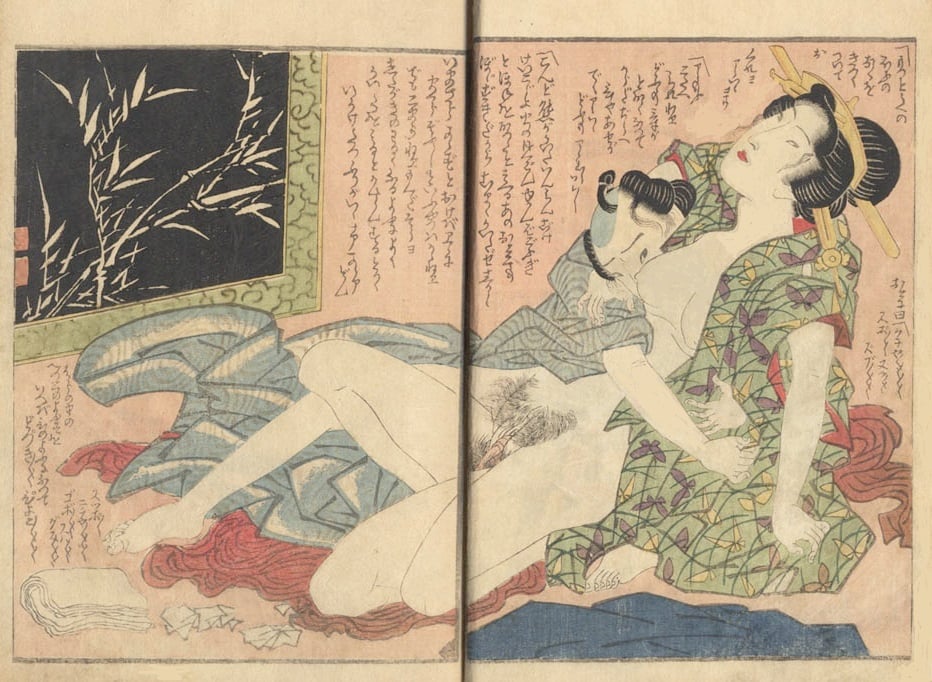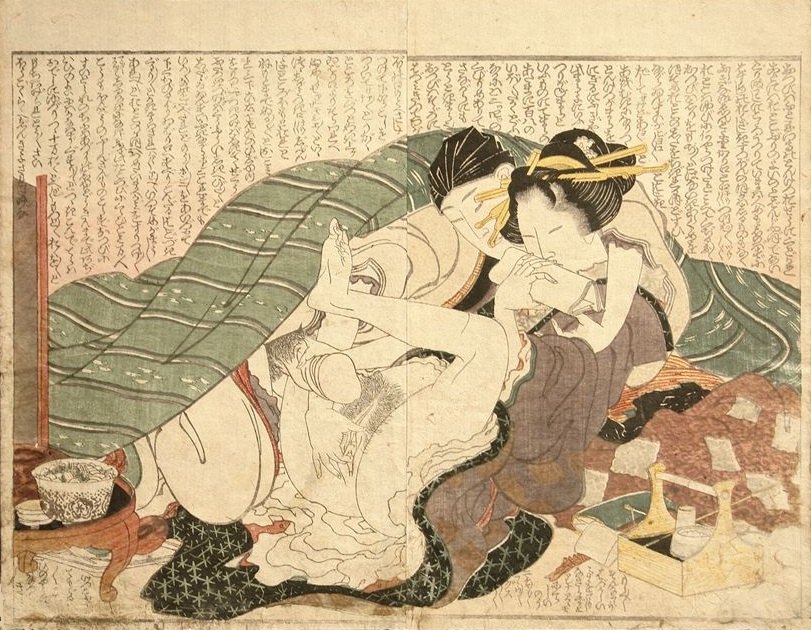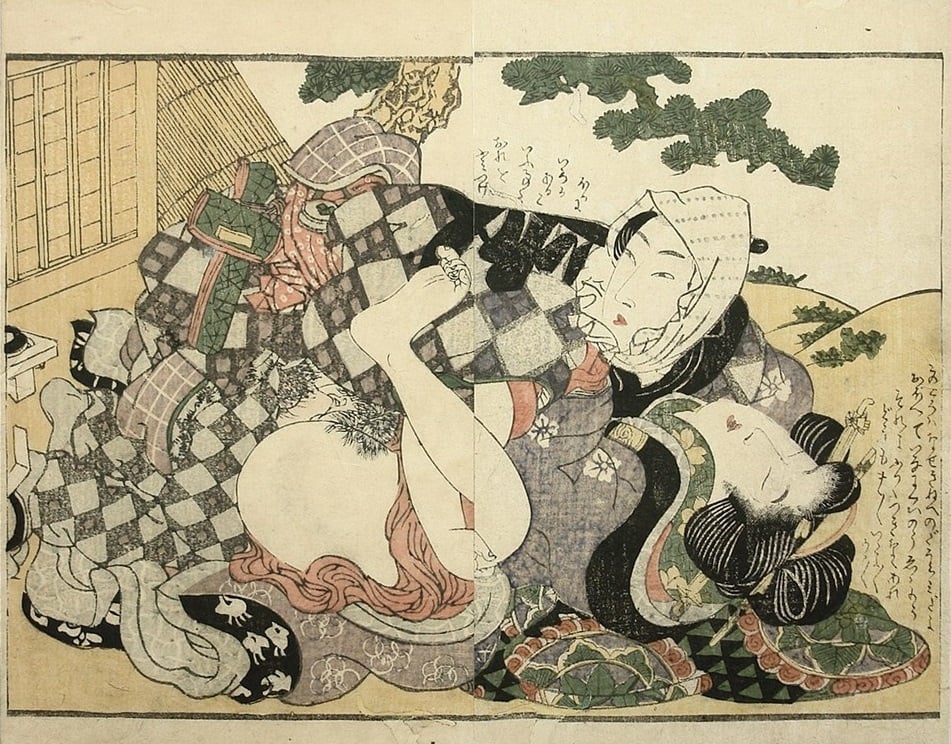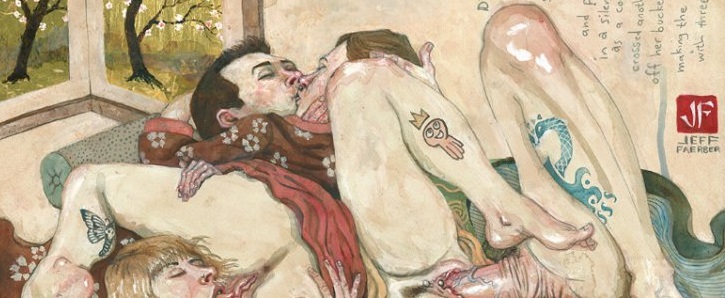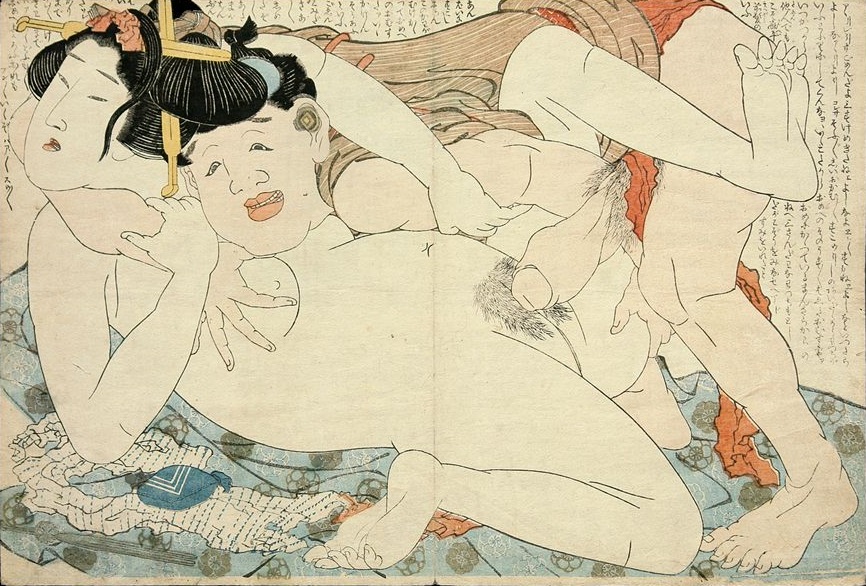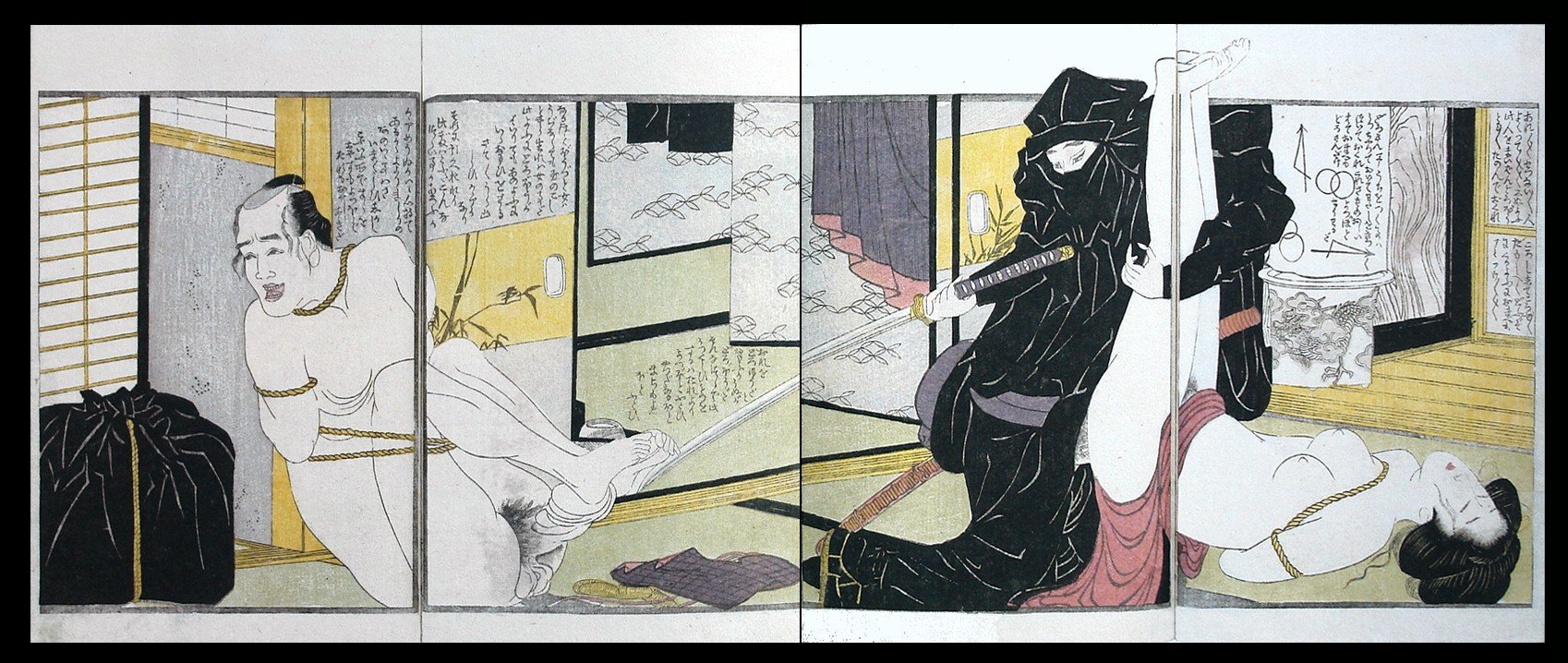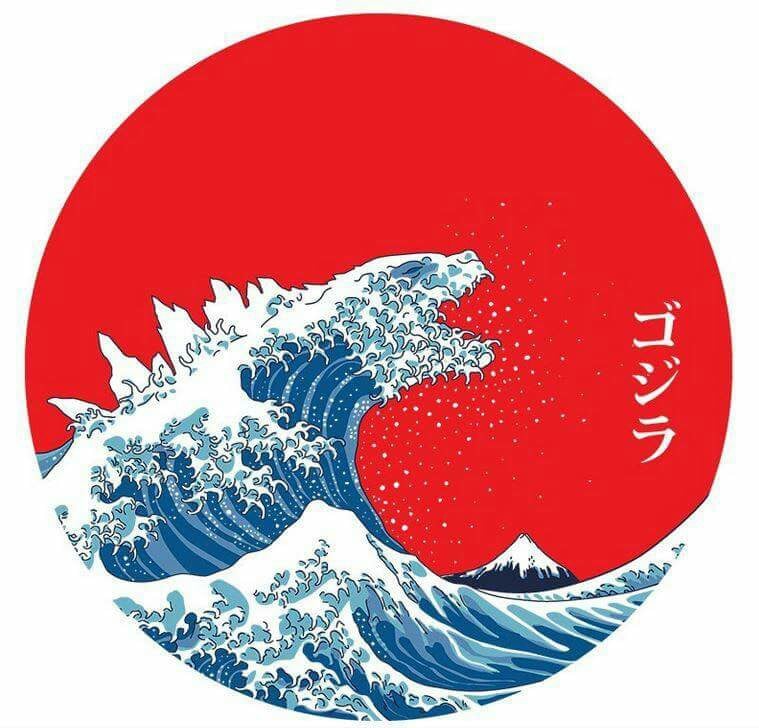
Even those who do not know ‘The Great Wave‘ by the Japanese artist Hokusai (1760-1849), knows it. As a meme, as a sweater or as a emoji. What makes this woodblock print from the early 1830s so compelling?
Waves Are Claws
Tell them, Vincent. ‘These waves are claws, the boat is caught in them, and you feel it. Hokusai makes you scream […], only he does it with his lines. Thus, Van Gogh wrote on Saturday 8 September 1888 in a letter to his brother Theo about a print he didn’t possess, but greatly appreciated. The woodblock print in question was ‘The Great Wave of Kanagawa‘ of the Japanese artist Katsushika Hokusai.
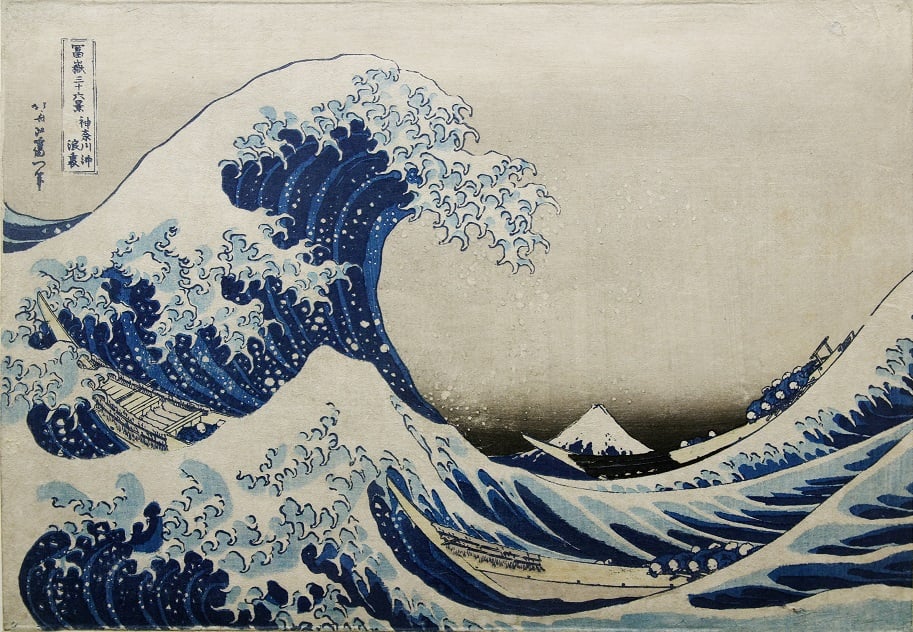
‘The Great Wave of Kanagawa‘ (c.1831) from the series ‘36 Views of Mount Fuji‘ by Katsushika Hokusai (1760-1849) (Housed in the British Museum)
Sparing Palette
This woodblock print, from the so-called ukiyo-e style, dates from around 1830, with a size of 10″ x 14 1/2″ inches. It shows a heaving sea with three boats and a giant wave with Mount Fuji in the morning sun in the background. The depiction is a maritime yin and yang, composed of circles and rectangles, elegant of line and with a sparing palette: blue for the water, yellow for the boats, grey and orange for the air. The image is iconic in and outside of Japan. Even those who do not know the work, know it.
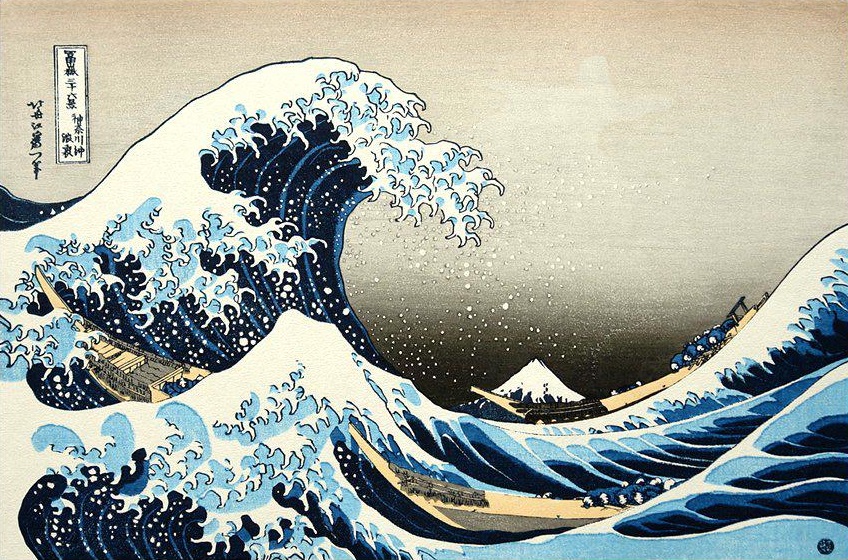
Genuine woodblock reproduction ‘The Great Wave‘ (printed 20th Century) (For sale in our gallery – click the image for more info!)
Cunnilingus
In this, The Big Wave is exceptional. Other ukiyo-e images of world renown are few. Classics in this art form are always classics by approximation; they are popular in circles of historians, Japanologists, print collectors and so on, but not among the general public. Who knows, for example, daring pieces like Hiroshige’s ‘Sudden Shower over Shin-Ōhashi bridge and Atake‘, with the little lugging figures in the rain or Hokusai‘s ‘The Dream of the Fisherman’s Wife‘, in which a naked woman is enraptured by the cunnilingus qualities of a giant squid, well?
Mad Men
Bert Cooper. From the t.v. series Mad Men. But he’s only one of the few. The Great Wave, on the other hand, everybody knows. Its destiny is that of all famous artworks, since it is depicted on posters, sweaters, tracksuits, sneakers, nails, duvets, bento boxes and make-up; and that’s just the replicas in the unaltered state.
Cookie Monster
Moreover, there are the homages, parodies and memes on the internet in which it also frequently performs. Because of its recognizability, it is nice to play around with The Wave and lends itself perfectly for digital diligence. Add two ping pong balls and you have cookie monster. Make it green and you’ve got Godzilla. Did you notice how much it resembles David Lynch’s choppy hairdo, and how easy he can combined with Pokemon dragons, with Van Gogh‘s The Starry Night or a surfing rabbit? Simple entertainment, but reputation-enhancing entertainment.
Million Dollars
One of the finest editions of The Wave is in the hands of an unknown Japanese collector. This print concerns a rare early impression, concerns a rare early print, which can be recognized by the lines, its smoothness and the intensity of the colors: the deep grey around Mount Fuji, the hint of orange in the morning sky. This copy is costly. It would now yield about a million dollars.
Street Hawkers
Hokusai‘s contemporaries would be surprised about this kind of money. In those days woodblock prints were seen as mass products. They were sold in small bookstores and by street hawkers at tourist spots and offered for the price of a bowl of rice. The same was true for The Big Wave.
Prodigal Son-In-Law
When Hokusai designed the work, he was seventy and a famous and accomplished master. His prodigal son-in-law had taken his retirement, and so he was forced to approach the renowned publisher Yishimura Yohachi with the plan to immortalize Mount Fuji in a series of prints, ten in total, all azure tinted.
Small Waves
Those prints were produced, although he made thirty-six instead of the intended ten designs and the blue was joined by yellow, green and red: : a couple of hikers – stripped of their headgear by a gust of wind; fishermen on the coast – throwing lines into small waves. The Big Wave became the first one in the series.
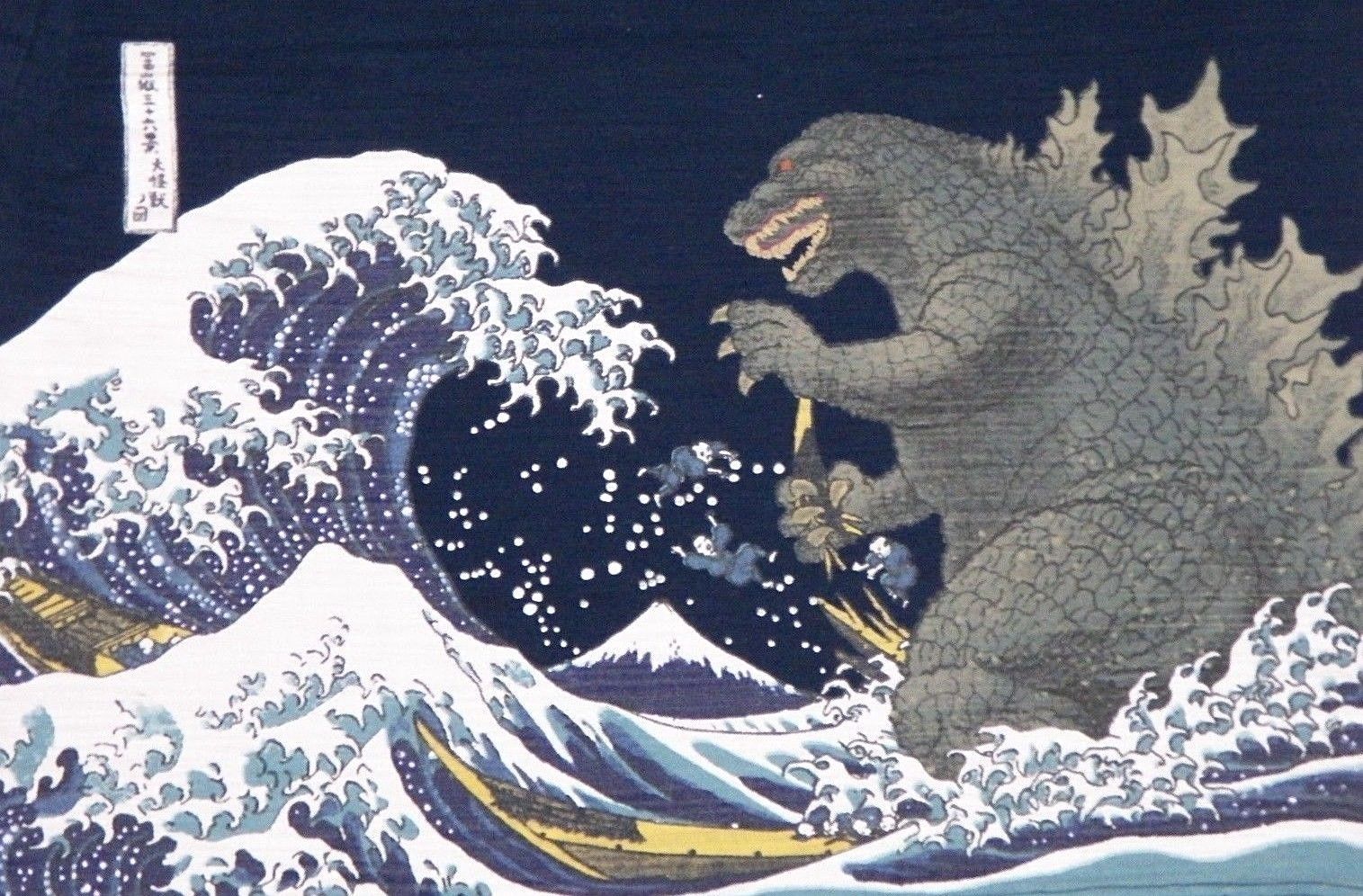
Sweater depicting ‘Wave vs Godzilla‘
Super Mario Rocks
Throughout the course of his life Hokusai was intrigued with the stirring of the waters. Thirty years earlier he already tried to capture this most fading of all subjects in his prints. However, at that time, he did not succeed because his waves looked more like Super-Mario rocks, more granite than water. The missing ingredient was the writhing foam of the breaking waves. This made them instantly recognizable as waves.
Dutch Sea Painters
Hokusai was inspired by the painter Shiba Kokan, an artist from Nagasaki, who himself was inspired by the Dutch sea painters such as Hendrick Vroom en Willem van de Velde. He refined his technique and learned how to make waves that looked fluid.
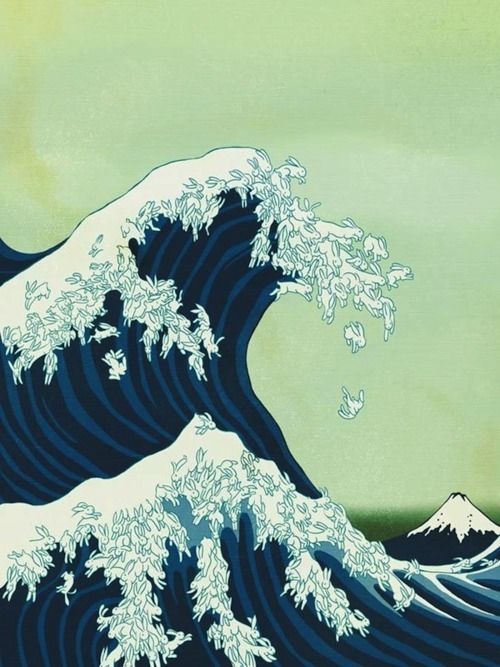
‘Rabbit wave‘ (The Giant Robot Magazine did this twist for its front cover)
Production Process
Hokusai did not have much to say about the production process. He only had a say in the colors. The other choices were made by publisher Yohachi. He gave Hokusai‘s design to a professional woodcarver (horishi), who transferred the drawing to a cherry wood plank and cut away the excess material: the key block; the same woodcarver also cut blocks for the individual colors.
Fell Apart
The blocks went to the printer, were rubbed in with paint, then laid on paper and treated with a special tool – and that three hundred times. When the edition was sold out, a new one was printed. After a while the blocks started to wear out. Their surface shrank and the lines were cracked. There were prints with white edges between the colors, especially visible at the signature, and unruly lines, seen on the back of the wave, but they continued to print until the blocks fell apart. For specialists such imperfections are an important characteristic. They help date the individual copies of The Wave.
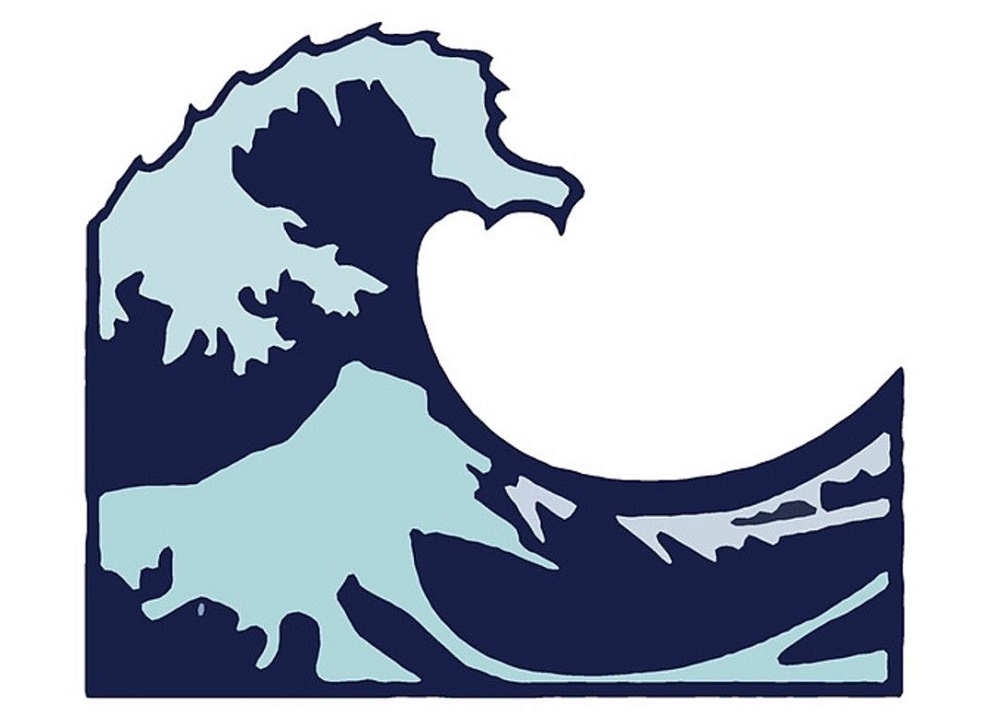
‘The Great Wave‘-inspired Emoji icon for iOS and OS

